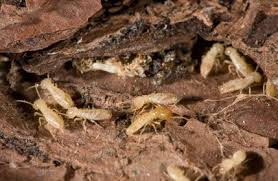The Ultimate Guide To Termite Control Orkin
Termite species are best identified by their own soldier termites, which has the most prominent features.
These termites are commonly distributed throughout Victoria, and are responsible for more than 80 per cent of termite damage to buildings.
Soldiers have brown, saber-like jaws. They measure 3.56.5 mm in length. When disturbed, these soldiers eject a rubbery substance from their heads.
Coptotermes build nests in trees (preferring eucalypts), stumps, under concrete flooring, in wall cracks or enclosed verandahs.
An Unbiased View of Termite Control Organic Way
These termites traveling at least 50 metres in the colony using a series of underground tunnels to find food. Coptotermes acinaciformis send large numbers to new food resources and, therefore, respond strongly to bait. In contrast, Coptotermes frenchi explore widely for new food sources and feed at numerous points.
Nasutitermes exitiosus is common north of the Great Dividing Range. They construct dark, thin-walled mound nests between 30 cm and 75 cm above ground. These mounds are up to 1m in diameter.
This is Victorias biggest species of termite, occasionally called termite. They are normally found nesting in large parts of wood (especially older trees) and are most common in moist, mountainous locations. They can also be found in the arid foothills of Melbourne.
Porotermes tend to reside in colonies than other species, and do not construct shelter tubes or traveling much underground. They're more easily controlled than other species.
The Main Principles Of Termite Control Paint
A colony of Schedorhinotermes will have two distinct sizes of soldiers, also called major and minor soldiers. Important soldiers grow around 5.6 mm long, while minor soldiers are only 3.6 mm long. Both types of soldier have mandibles.
Schedorhinotermes are destructive and relatively nomadic, rather than maintaining a fixed, central nest.

The soldiers of the species are around 4.75 mm long, with lengthy, dark jaws and parallel-sided heads.
All about Termite Control Orkin
Heterotermes live in smallish colonies which attack fence posts, wood flooring, and paling fences within a small radius of the nest. They are commonly found because they feed on small timbers on the ground surface.
Dusts work to control termites because they ingest and distribute the insecticide among the colony during habitual grooming.
Insect growth-regulator dusts (like Triflumuron) and non-repellent termiticides are the most powerful means of termite dust control for the human consumer.
Arsenic trioxide dust has been used since the 1930s to control termites, often with the addition of oxide or another colourant. But, arsenic trioxide is a poisonous, highly toxic elemental pesticide that does not degrade.
Baiting is most often the ideal way to kill an attacking colony when the main nest website cannot be found. Bait stations also allow you to collect samples click now of termites for species identification.
Rumored Buzz on Termite Control Orkin
Bait stations consist of containers of cellulose materials such as wood, paper or cellulose gel which are either buried in the ground near the building under attack or carefully positioned inside near known damage.
Bait generally use slow-acting, non-detectable toxins in order that the nearly whole colony can be poisoned before adverse impacts appear. Repellent termiticide formulations like those of pyrethroids are not as colony control agents. Care has to be taken not to cross contaminate baits using even tiny residues of different pesticides.
Baiting does not provide a practical barrier. The baits do not isolate the building since termites are still able to access the construction. For long-term structural protection, barriers are favored.
Termite Control Orkin Things To Know Before You Buy
Chemical barriers function by applying an unbroken boundary of pesticide around the exterior of an infested structure. This makes a zone or band of soil that is toxic that the termites cannot cross. Creating an effective chemical barrier may involve trenching around the foundations of this construction, and injecting the chemical into the ground through holes drilled in concrete foundations. .
Termites work through the treated soil unaware that they are picking up a toxic compound. This greatly lessens the termite population and might ruin the colony.
Repellent chemicals, such as Bifenthrin, are commonly used as barriers. Non-repellent termiticides, for example Imidacloprid and Fipronil, can be more resilient where protection is uncertain (for instance, where the compound is injected through concrete).
Soil may also be treated with visit this site right here a chemical barrier prior to building construction. Bifenthrin is commonly employed for this purpose; Imidacloprid is often used for the perimeter of a new arrangement.
Facts About Termite Control Organic Way Uncovered
This method isolates the termite colony out of a building by creating an entire barrier around or beneath a buildings foundations that termites cannot cross.